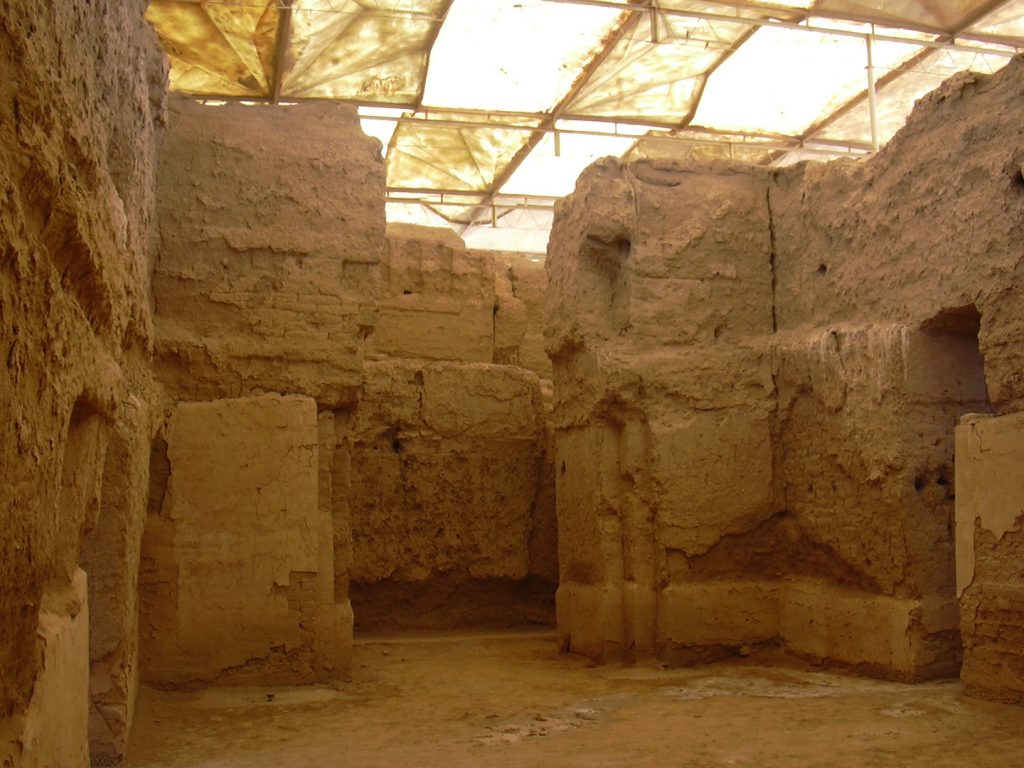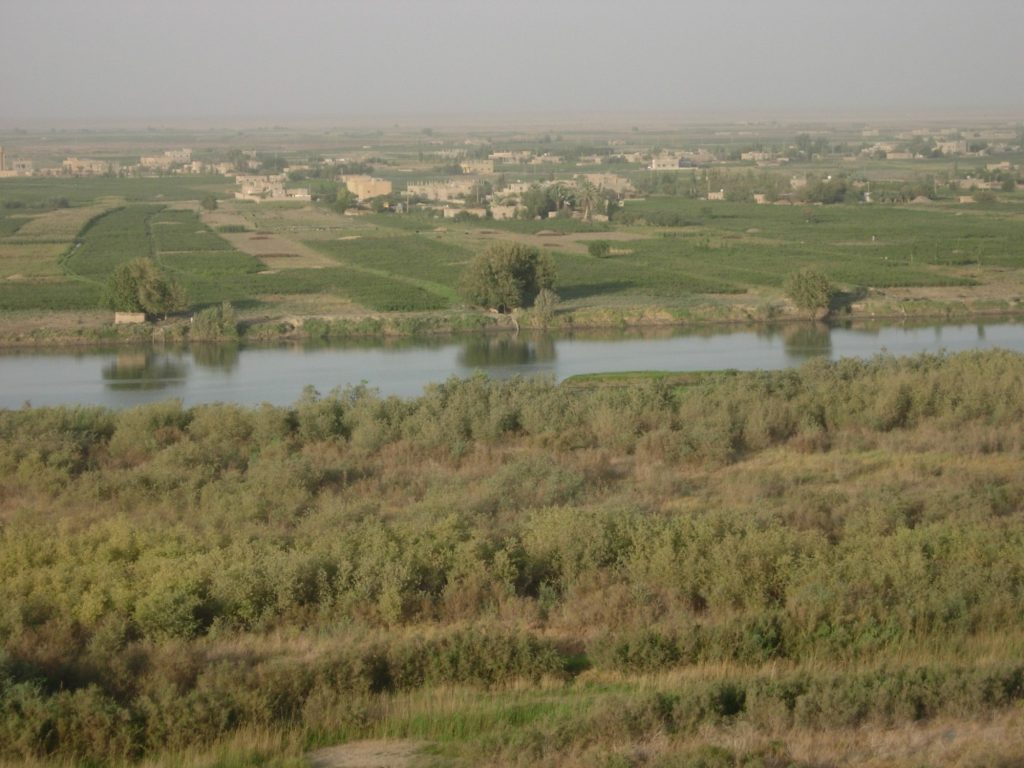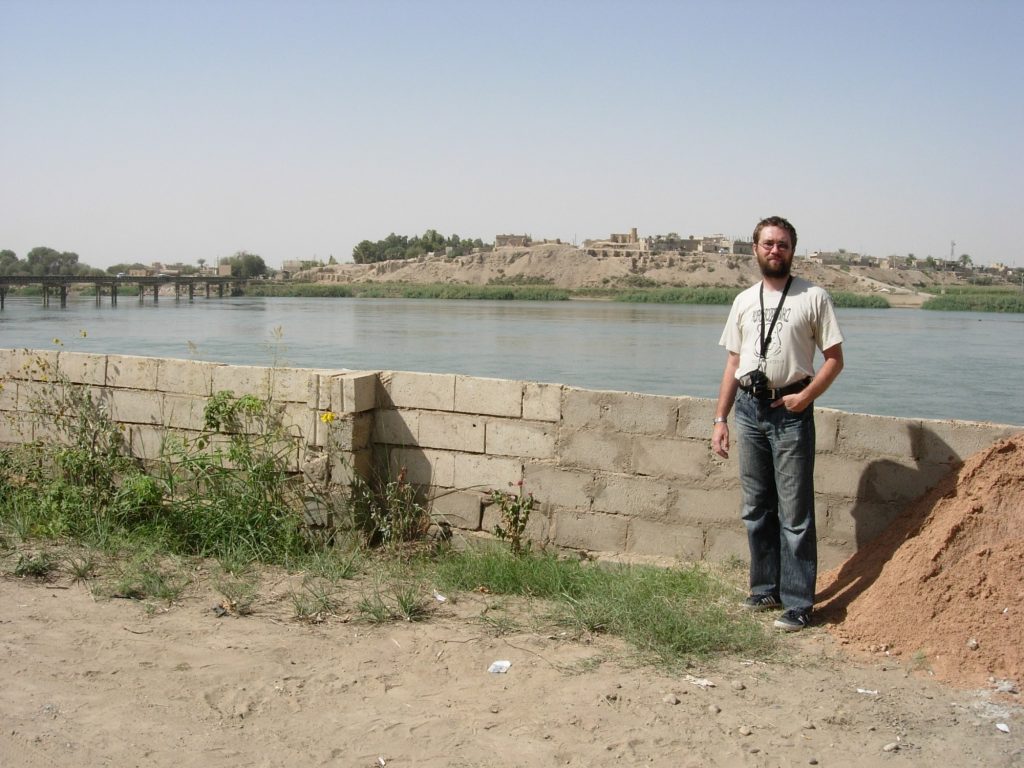Kings of Mari controlled an important trade route in the valley of the Euphrates River in the 3rd and early 2nd millennium BCE. Although their country was situated in an area with unfavourable conditions for agriculture, the economy of the kingdom of Mari could support a big population. The key to understanding this paradox is animal dung.
The kingdom of Mari was the most powerful country of north Mesopotamia in the 3rd and early 2nd millennium BC. Its power is reflected both by the size of its capital (modern archaeological site of Tell Hariri), which occupied an area of more than 60 hectares – more than Cracow in the 13th century – and by the fact that six of its rulers were included in the Sumerian King List, that is a record of the dynasties that were regarded as those holding superior power in Sumer. The dynasty from Mari was the only dynasty from north Mesopotamia on this list.

Photo: Herbert Frank
(Published under CC BY 2.0, via Wikimedia Commons)
The source of Mari’s power was its location on a very important trade route situated along the Euphrates River, communicating south Mesopotamia with Anatolia, which had various resources. The area of Sumer lacked good quality wood, quarries and ores – all that had to be imported from the north and shipped along the river, and those who controlled a significant part of the course of the Euphrates River could earn a fortune as intermediaries of the trade. Kings of Mari took advantage of this situation for more than a millennium, until the last of them, Zimri-Lim, was defeated by Hammurabi of Babylon in 1761 BCE. Hammurabi wanted to take over the control of the trade route, so he had the city demolished and it was never rebuilt. In this way, the kingdom of Mari ceased to exist.
Economy in the state of Mari
At the time of its greatest prosperity, around 2500-2300 BCE and 2000-1761 BCE the kingdom of Mari was not only wealthy, but also densely populated – several bigger and many small towns belonged to it apart from the capital city. Such a big population would rather be unexpected since it was difficult to produce so much food in the vicinity of Mari to feed everybody. The annual average precipitation is below 150 mm, much less than necessary to grow even the most drought-resistant cereals. The valley of the Euphrates River in this part of Mesopotamia is relatively narrow and deep, for this reason, even if irrigation canals were dug on a local scale, the farming area was relatively small.

A.Sołtysiak, published under CC BY-NC-SA
The shortage of cereals could partially be compensated for by raising sheep and goats in the semi-desert area outside the upper terrace of the valley and kings of Mari indeed tried to exploit this part of the land, what we know from surviving archives. Nevertheless, owing to their mobility, shepherds were so independent that the royal administration often lost control over their activity, which was an additional risk factor. Import of food from a more fertile dry farming region north of Mari was another possibility, but also in this case, deliveries could be easily blocked by a potential invader.
Despite abundant written sources, particularly documenting the final phase of the existence of the kingdom of Mari, until recently it was unclear how a country with an economy burdened with so many challenges could function properly for many centuries. New methods of biochemical analyses made it possible to answer this question.
New perspective of ancient economies
For about thirty years archaeologists have been able to use an efficient method for reconstruction of diet and subsistence in ancient societies. This method involves analysing proportions of stable isotopes of some elements, especially carbon and nitrogen. Various types of food display different isotope characteristics, for instance, marine products are characterized by higher proportions of the heavier isotope of carbon (atomic mass number 13) and of heavier nitrogen isotope (atomic mass number 15) than land products. These differences are then reflected in tissues of the consumers of the food, also in bones, both in humans and animals. As a result, when we analyse the proportions of isotopes in human skeletons found at archaeological sites, we can at least partially reconstruct their diet and deduce the composition of their food.
Analysis of stable isotopes of nitrogen provided particularly helpful information for solving the puzzle of economic stability of the kingdom of Mari. Nitrogen is an essential ingredient of proteins, and thus also of collagen, which can be preserved in bones for thousands of years. It was established decades ago that the heavier nitrogen isotope is found in higher proportions in animal-derived food, especially in marine fish. In addition to that, its content is higher in tissues of plants and animals living in dry environments.
Only recently it was proven there is yet another factor that increases the proportion of the heavier nitrogen isotope in tissues of crops, namely soil fertilization with animal manure. Since animal manure contains more of the heavier nitrogen isotope than soil, the proportion of this isotope is elevated in plants that grow in soil enriched with such fertilizer and this results in an increased level of the heavier nitrogen isotope in tissues of the consumers of these plants. If intensive fertilization is repeated over many years, the cumulated effect of this cycle could be very pronounced.
The intensity of soil fertilization in the kingdom of Mari
The second biggest administrative centre of the kingdom of Mari was the city of Terqa (modern Tell Ashara), located approx. 50 km upstream the Euphrates River. Excavations at this archaeological site and in its vicinity were conducted in 1987-2010 by a French-Syrian mission headed by Olivier Rouault from the University of Lyon and Maria Grazia Masetti-Rouault from École pratique des hautes études in Paris.

B. Sołtysiak, under CC BY-NC-SA
Nearly a thousand human skeletons were excavated at Terqa and sites located in its vicinity. They represent almost five millennia of the history of this area (from about 2500 BC almost to modern times) and have been helpful in the process of tracking changes in the proportions of nitrogen isotopes at the time when the kingdom of Mari was a regional power as well as in more recent periods, when small local states functioned in this area or when this part of the valley of the Euphrates River was incorporated into great empires after the Assyrian conquest.
The results of the analysis turned out very interesting: the proportion of the heavier nitrogen isotope in most skeletons dated to the times of the kingdom of Mari was significantly higher than in skeletons from later periods. Such a pronounced difference could not have been caused by climate change or a modification of the diet towards decreased consumption of animal-derived products. The only factor that might have led to such a big difference was a change in the intensity of soil fertilization.
In this way the puzzle of economic stability of the kingdom of Mari was solved – its inhabitants made the best use of the local farming land, expanding it by developing the local network of irrigation channels and above all, by increasing the production of cereals by means of intensive fertilization with animal manure. As a result, the local economy was less vulnerable to crises connected with cutting off the sources of imported food, although considering the large population, it was probably not fully self-sufficient.
After the fall of the kingdom of Mari the local population decreased considerably and this made such an intensive agricultural production no longer necessary, which is reflected in the evident drop in the proportion of the heavier nitrogen isotope in human skeletons. Perhaps the absence of strong central administration contributed to this change. When the kingdom of Mari flourished, its administration could organize the distribution of animal manure more efficiently, for instance by systematic grazing of herds in stubble fields.
Although we now look at Mari from the perspective of well-preserved royal palaces, extensive archives and beautiful artefacts unearthed by archaeologists, it turned out that the strategic resource of this wealthy kingdom was not gold, but animal dung.
The results of the study of nitrogen isotope ratios in skeletons from Tell Ashara and other sites were published in the American Journal of Physical Anthropology.
This article may be freely reprinted with photographs, with reference to the source
Author: Arkadiusz Sołtysiak
About the author: Arkadiusz Sołtysiak works at the Department of Bioarchaeology at the Faculty of Archaeology of the University of Warsaw and conducts numerous studies in the Middle East, including Syria, Iran and Lebanon.
Translation: Barbara Majchrzak
